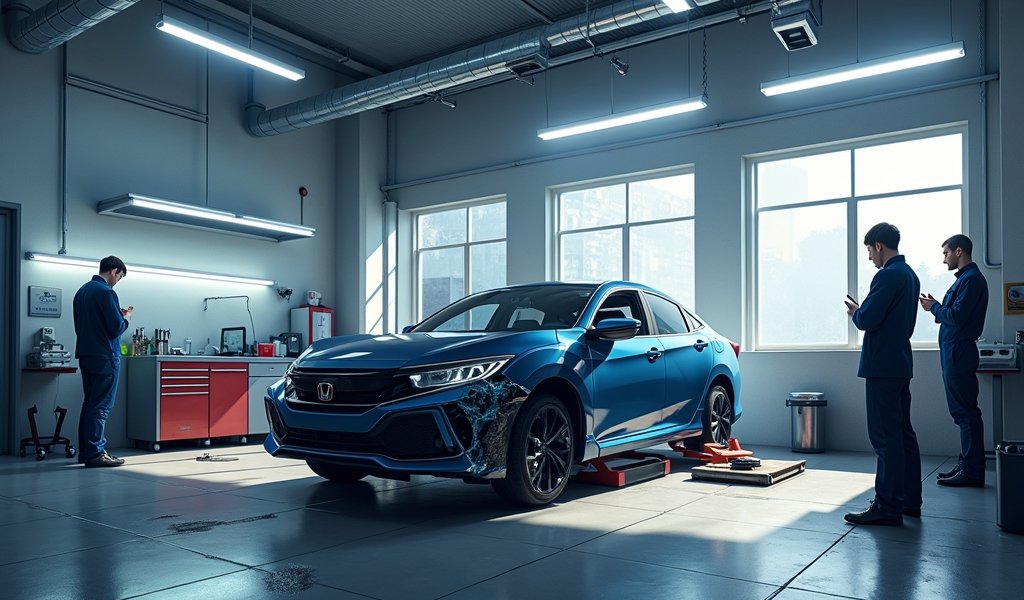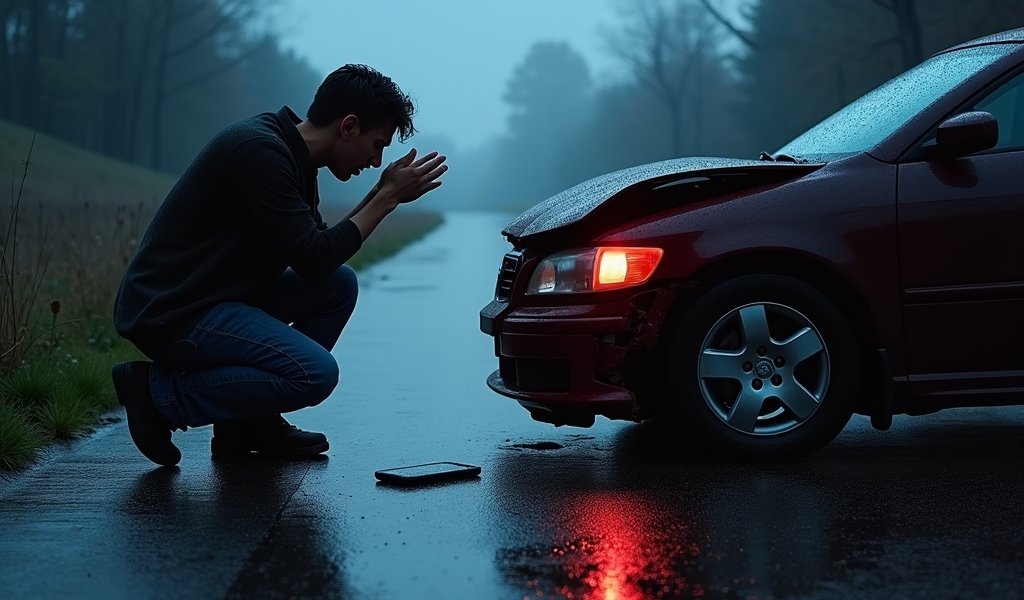Overview
This article outlines five critical mistakes to avoid after a car accident: fleeing the scene, failing to document the crash, admitting fault, refusing medical attention, and accepting the first settlement offer. The author, a mechanic, emphasizes that proper post-accident actions are crucial for physical recovery and financial protection, offering practical advice on documentation, communication, and seeking appropriate professional help.
Table of Contents
- The Chaos of a Crash: When Metal Meets Metal
- Mistake #1: Fleeing the Scene — A Recipe for Disaster
- Mistake #2: Skipping the Documentation — Your Digital Lifeline
- Mistake #3: The “I’m Sorry” Trap — When Words Cost You
- Mistake #4: Brushing Off Medical Attention — The Silent Danger
- Mistake #5: Jumping at the First Settlement Offer
- Navigating the Road to Recovery
- Additional Resources to Keep Handy
- Frequently Asked Questions
The Chaos of a Crash: When Metal Meets Metal
There’s nothing quite like that heart-stopping moment when a car crash happens. One second you’re driving along, maybe humming to your favorite tune, and the next—bang! Metal crunches, airbags deploy, and everything changes in the blink of an eye.
With over 6 million accidents happening each year across America, car crashes aren’t just something that happens to “other people.” Chances are pretty good that someday you’ll find yourself dealing with one, whether it’s a minor fender-bender or something more serious.
As a mechanic who’s seen the aftermath of countless accidents roll into my shop, I can tell you that what you do in those first chaotic minutes after a crash can matter just as much as what happened during it. Your adrenaline’s pumping, your hands might be shaking, and it’s easy to make snap decisions you’ll regret later.
Let’s talk about the five biggest mistakes I see folks make after an accident. Trust me, knowing what not to do after a car crash might save you thousands of dollars and countless headaches down the road.
Mistake #1: Fleeing the Scene — A Recipe for Disaster
I get it. After a minor bump, there’s that fleeting thought: “Maybe I could just drive away?” Maybe you’re late for something important. Maybe you’re worried about your insurance rates. Maybe you just hate confrontation.
Here’s my advice as someone who’s helped customers navigate the aftermath of hundreds of crashes: Don’t. Ever. Leave.
Leaving the scene transforms a simple accident into what the law calls a “hit-and-run” — and that’s a whole different ballgame. In every single state, it’s illegal and comes with penalties that’ll make your insurance hike look tiny by comparison.
Depending on where you live and the severity of the crash, we’re talking about potential jail time, license suspension, and fines that could run into thousands of dollars. According to the Insurance Information Institute, penalties have been getting stricter in recent years as hit-and-runs have increased.
Even if it seems like a tiny scratch, what looks minor might be hiding serious damage underneath—just like when a customer brings in a car with “just a bumper scratch” and we find frame damage hiding beneath.
The only exception is when staying put would be dangerous. If you’re blocking traffic on a busy highway, for example, it’s okay to move to the nearest safe spot. Just make it clear to everyone involved that you’re relocating for safety, not running away.

Mistake #2: Skipping the Documentation — Your Digital Lifeline
In my 15+ years working on cars, I’ve heard countless stories of “he-said, she-said” after accidents. The best defense? That smartphone in your pocket.
Not taking photos after an accident is like driving without insurance—you’re taking a massive, unnecessary risk. Your memory of the event will fade faster than you think, but pictures tell a story that won’t change over time.
Documenting a car crash properly isn’t just helpful—it’s essential. Think of your phone camera as your best ally in making sure you get fairly treated by insurance companies.
Here’s what you should snap photos of:
- All vehicles involved, from multiple angles (get the whole car, not just the damaged areas)
- License plates of every vehicle involved
- The wider accident scene, including road conditions and traffic signs
- Any visible injuries (with permission, of course)
- Property damage beyond just the vehicles
- The positions of cars before they’re moved (if it’s safe to take these)
Beyond photos, collect contact information from any witnesses. These neutral third parties can be invaluable if the other driver’s story suddenly changes when they talk to their insurance.
Write down or voice-record exactly what happened while it’s fresh in your mind. Include details like weather conditions, time of day, and what you were doing right before the crash.
This documentation is like changing your oil regularly—a small investment of time that prevents much bigger problems down the road.
Mistake #3: The “I’m Sorry” Trap — When Words Cost You
As a mechanic, I’m used to customers apologizing when they bring in neglected vehicles. It’s human nature—we say “sorry” almost reflexively. But after an accident, those two little words can cost you big time.
Here’s something I tell all my friends and customers: at an accident scene, be kind and compassionate, but be careful what you say.
Statements like “I didn’t see you coming” or “I should have been more careful” might seem harmless in the moment. They’re not. Insurance adjusters and attorneys can interpret these as admissions of fault, potentially reducing or eliminating your compensation.
I had a customer who accidentally said, “I was looking at my dashboard for a second” after a minor collision. That single comment ended up increasing her liability by about 30% in the final settlement.
Instead, focus on exchanging the necessary information with the other driver—names, contact details, insurance information, and vehicle details. When describing what happened, stick to objective facts: “I was traveling north on Main Street when the collision occurred.”
Determining who’s at fault in an accident is like diagnosing a complex engine problem—it requires analyzing multiple factors. Leave that assessment to the professionals who do it every day.
Mistake #4: Brushing Off Medical Attention — The Silent Danger
As someone who fixes cars for a living, I’m always amazed at how people will rush their vehicle to a mechanic after the tiniest fender-bender but refuse medical attention for themselves.
Here’s the thing about crash injuries—many don’t show up right away. Your body pumps out adrenaline and endorphins during a traumatic event, effectively masking pain. It’s nature’s way of helping you deal with immediate threats.
But those chemicals wear off, and often what felt fine at the crash site becomes painful hours or days later. This is especially true for soft tissue injuries, concussions, and certain internal injuries.
I’ve seen customers who declined medical attention after an accident end up with chronic neck and back problems that could have been treated more effectively if caught early. According to the CDC’s research on crash injuries, prompt medical evaluation significantly improves outcomes.
Beyond health concerns, medical documentation creates a critical link between the accident and your injuries. Without this paper trail, insurance companies might argue that your injuries came from something else entirely.
Think of medical attention after an accident like diagnosing a strange noise in your car—it’s much better to check it out right away than to wait until something seriously breaks down.

Mistake #5: Jumping at the First Settlement Offer
When an insurance adjuster calls offering a quick settlement after your accident, it can feel like finding a short line at the DMV—too good to be true. And usually, it is.
Early settlement offers remind me of those “quick fix” engine additives that promise to solve complex mechanical problems—they rarely address the full scope of the issue.
Insurance companies are businesses first and foremost. Their profit model depends on paying out as little as possible on claims. That’s not being cynical; it’s just how the business works.
Those initial offers typically come before you fully understand the extent of your injuries, required treatments, time away from work, or how the accident might affect you long-term.
I’ve seen customers accept quick settlements only to discover they needed additional surgeries or physical therapy that the settlement didn’t cover. Once you sign that release form and cash the check, you’ve generally closed the door on asking for more—even if your condition worsens.
Before accepting any offer, understand what you might be giving up. Many personal injury attorneys offer free consultations and can help you understand if an offer is fair. Understanding how car insurance works after an accident can save you from significant financial hardship down the road.
Just like I wouldn’t recommend skimping on quality parts for a major repair, I’d never suggest taking a quick settlement without fully understanding your situation.
Navigating the Road to Recovery
The journey after a car crash is a lot like rehabilitating a severely damaged vehicle—it takes time, patience, and following the right process. By avoiding these five critical mistakes, you’re giving yourself the best chance at a complete recovery—both for your physical well-being and your financial health.
Car accidents, like mechanical failures, rarely announce themselves in advance. The best approach is preparation. Program emergency contacts into your phone, understand your insurance coverage before you need it, and maybe even keep this list of “what not to do” somewhere in your glove compartment.
Remember that in those critical moments after a crash, how you respond can be just as important as what happened during the collision itself. Take a deep breath, follow the right steps, and give yourself time to process what happened.
And if you’re ever in doubt about what to do next, don’t hesitate to consult with professionals—whether that’s medical experts for your health or legal advisors for your claim. Just like you’d trust a certified mechanic with complex car problems, some situations call for specialized expertise.
Additional Resources to Keep Handy
- Create an accident kit for your glove compartment: Include a small notebook, pen, and checklist of what to do after an accident
- Consider downloading an accident documentation app that walks you through the necessary steps when you’re still in shock
- Keep your vehicle’s registration and insurance information easily accessible
- Program emergency contacts in your phone under “ICE” (In Case of Emergency)
- Know when it’s time to consult with a legal professional—generally when injuries are significant, fault is disputed, or insurance companies aren’t playing fair
Have you experienced a car accident? What do you wish you had known beforehand? Sharing our experiences helps everyone be better prepared for the unexpected bumps in life’s road.
Frequently Asked Questions
Should I call the police for minor accidents with no injuries?
Yes, you should still call the police even for minor accidents. A police report provides an official record of the incident that can be invaluable for insurance claims.
How long do I have to report an accident to my insurance company?
Most insurance policies require you to report accidents “promptly” or “within a reasonable time,” usually within 24-72 hours. Check your specific policy for exact requirements.
Can I negotiate with insurance companies myself or do I need an attorney?
You can negotiate with insurance companies yourself for minor accidents with no injuries. For more serious crashes involving injuries or significant property damage, an attorney typically helps you receive fair compensation.
What if the other driver doesn’t have insurance?
If the other driver is uninsured, you’ll need to rely on your own uninsured motorist coverage if you have it. Document everything carefully and contact your insurance company immediately.
Is it OK to discuss the accident on social media?
No, you should avoid posting anything about your accident on social media. Insurance companies and attorneys often monitor social media accounts and may use your posts against you during claims processes.


Pingback: Car Accident Checklist: 5 Proven Fixes - knowsyourcar.com